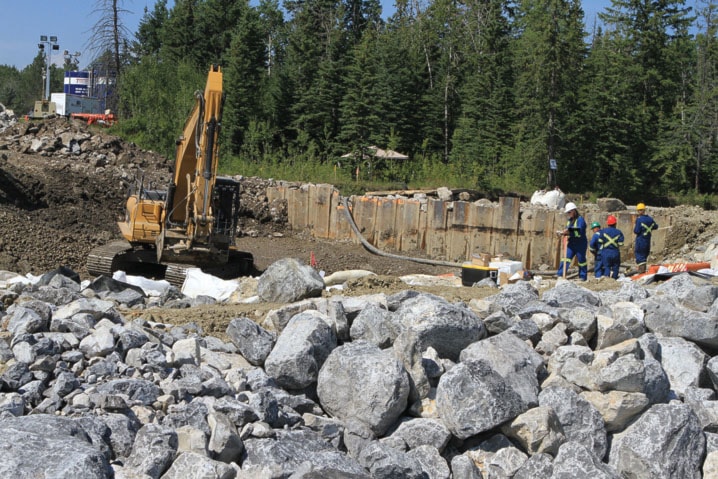Mother Nature’s self-healing powers prevented an oil spill on the Red Deer River from doing any lasting harm to poplar and willow trees, suggests research done by the University of Lethbridge.
A study team led by Stewart Rood, a researcher with the university’s Environmental Science Department, made three visits to the river following the June 7, 2012, spill by Plains Midstream. Up to 3,000 barrels (475,000 litres) of light sour crude oil was released into the Red Deer River from a ruptured Plains Midstream pipeline about one km north of Sundre.
Plains Midstream spent tens of millions of dollars and employed hundreds of workers to clean up following the leak from a pipeline running under the river.
Graduate student Evan Hillman was part of the team that made three visits to assess the environmental damage to poplar and willow trees two weeks, four weeks and 12 weeks after the spill. Graduate and under-graduate students returned last August to further study the area downstream of what is considered a relatively small oil spill.
The team rated the poplar and willow trees’ health on a scale of zero to five, and charted the health and growth of oiled and unoiled trees. Thermal images were taken of vegetation to determine if oiled leaves were suffocating. Leaves were also put under an electron microscope to study how the surface of leaves were affected.
“What we found was that stream-side vegetation is naturally resilient and they are accustomed to disturbances within the river valley,” said Hillman.
“So based on that, we found that the stream-side plants were less affected by crude oil than we initially expected.”
Leaves covered in oil fell off trees soon after the spill.
“Much as the leaves fall off in the fall, it was just a lot earlier,” he said.
“But the next year the oiled plants still remained healthy. They had full branches of leaves and they had an increase in height.
“So in the year following the spill we found minimal difference between the health of the oiled and unoiled plants.”
Work done by the students may prove useful to determining what sort of cleanup is necessary following a spill. If the amount of damage is limited, the study suggests vegetation can be left to repair itself in some cases.
However, if vegetation is completely oil covered and there is a risk to humans or animals, removing vegetation may still be the best plan of action.
Hillman said there is still more research being done. One of the questions that remains unanswered is what process led the leaves to drop off the trees. A student is testing the affects of both crude oil and diluted bitumen on trees to try to solve that puzzle.
pcowley@www.reddeeradvocate.com
